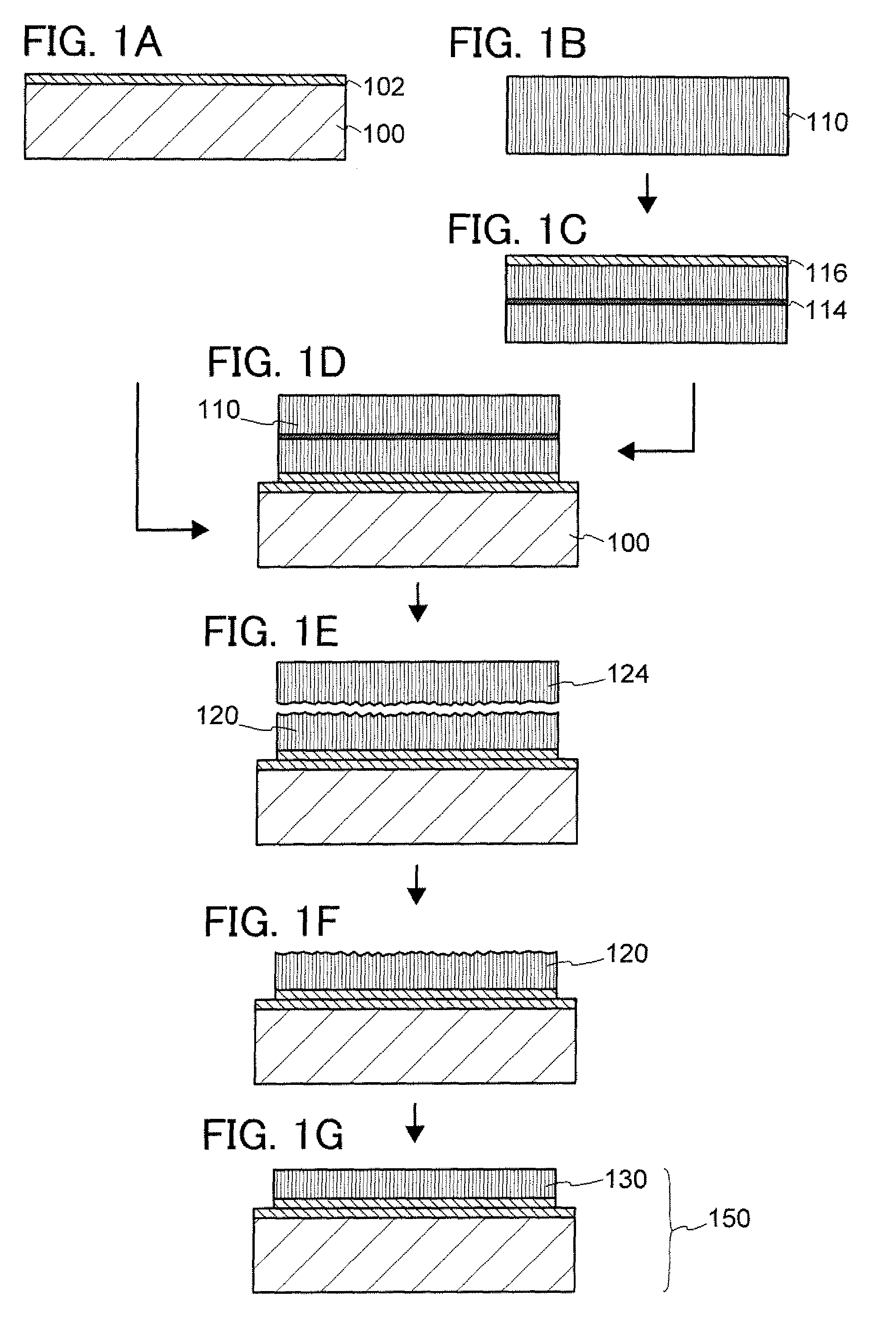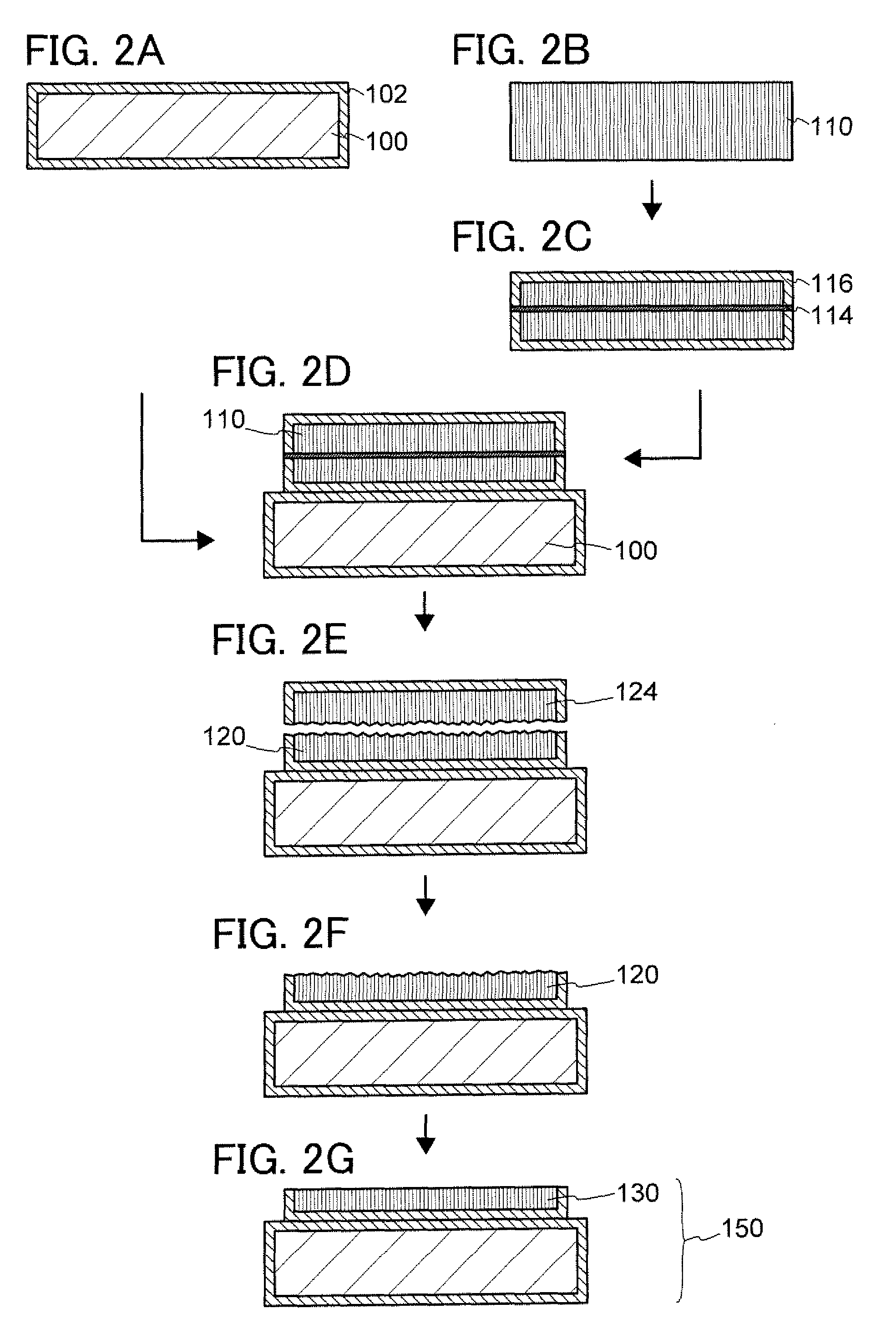Method for manufacturing semiconductor substrate, and semiconductor device
a manufacturing method and semiconductor technology, applied in semiconductor devices, electrical equipment, transistors, etc., can solve the problems of silicon carbide itself being the biggest problem, silicon carbide melting, and the inability to manufacture silicon carbide substrates by a high-productivity method, so as to reduce the manufacturing cost of a semiconductor substrate and reduce the manufacturing cost. , the effect of improving the characteristics of a semiconductor elemen
- Summary
- Abstract
- Description
- Claims
- Application Information
AI Technical Summary
Benefits of technology
Problems solved by technology
Method used
Image
Examples
embodiment 1
[Embodiment 1]
[0034]This embodiment describes an example of a method for manufacturing a semiconductor substrate according to one embodiment of the disclosed invention with reference to FIGS. 1A to 1G.
[0035]First, a base substrate 100 is prepared (see FIG. 1A). Although it is preferable to use a substrate with a high heat resistance, such as a quartz substrate, an alumina substrate, and a silicon substrate as the base substrate 100, a light-transmitting glass substrate used for liquid crystal display devices or the like can be used as long as the light-transmitting glass substrate can withstand heat. In this case, it is preferable to use a substrate having the strain point as high as possible. This embodiment describes the case where the silicon substrate is used as the base substrate 100.
[0036]Note that, as the base substrate 100, as well as the above substrate, a substrate which is formed with an insulator, such as a ceramic substrate or a sapphire substrate; a substrate which is ...
embodiment 2
[Embodiment 2]
[0067]This embodiment describes another example of a method for manufacturing a semiconductor substrate according to one embodiment of the disclosed invention with reference to FIGS. 2A to 2G. Note that there are many common points between the method for manufacturing a semiconductor substrate in this embodiment and the method for manufacturing a semiconductor substrate, according to the aforementioned embodiment. Therefore, in this embodiment, a method for manufacturing a semiconductor substrate which is different from the method according to the aforementioned embodiment will be described.
[0068]First, a base substrate 100 is prepared and an insulating layer 102 is formed on the surface of the base substrate 100 (see FIG. 2A). Here, the case where a silicon substrate is used as the base substrate 100 and a silicon oxide formed by thermal oxidation treatment is used as the insulating layer 102 is especially described. Needless to say, one embodiment of the disclosed in...
embodiment 3
[Embodiment 3]
[0074]This embodiment describes another example of a method for manufacturing a semiconductor substrate according to one embodiment of the disclosed invention with reference to FIGS. 3A to 3G. Note that there are many common points between the method for manufacturing a semiconductor substrate in this embodiment and the method for manufacturing a semiconductor substrate according to the aforementioned embodiment. Therefore, in this embodiment, a method for manufacturing a semiconductor substrate which is different from the methods according to the aforementioned embodiments will be described in detail.
[0075]First, a base substrate 100 is prepared and an insulating layer 102 is formed over the base substrate 100 (see FIG. 3A). The aforementioned embodiment can be referred to for details thereof.
[0076]Next, a silicon carbide substrate 110 is prepared and high conductivity region 112 is formed over the silicon carbide substrate 110 (see FIG. 3B). Note that in this embodim...
PUM
| Property | Measurement | Unit |
|---|---|---|
| temperature | aaaaa | aaaaa |
| temperature | aaaaa | aaaaa |
| diameter | aaaaa | aaaaa |
Abstract
Description
Claims
Application Information
 Login to View More
Login to View More - R&D
- Intellectual Property
- Life Sciences
- Materials
- Tech Scout
- Unparalleled Data Quality
- Higher Quality Content
- 60% Fewer Hallucinations
Browse by: Latest US Patents, China's latest patents, Technical Efficacy Thesaurus, Application Domain, Technology Topic, Popular Technical Reports.
© 2025 PatSnap. All rights reserved.Legal|Privacy policy|Modern Slavery Act Transparency Statement|Sitemap|About US| Contact US: help@patsnap.com



